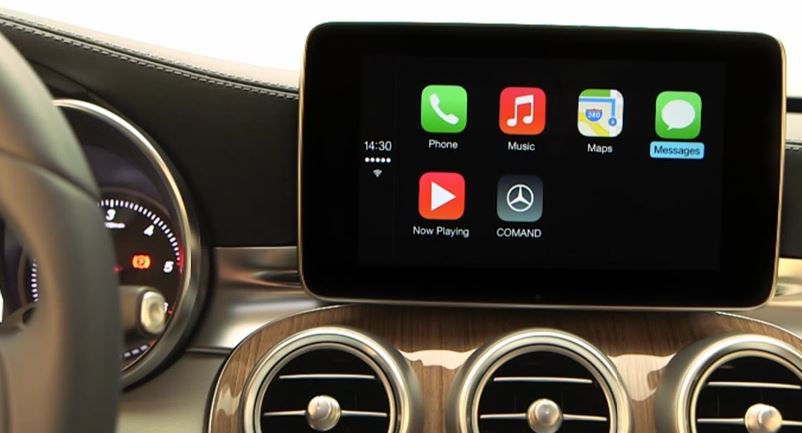
- 2 Min Read / Blog / 3.2.2020

One of the most obvious places for technology to intersect with travel is with automobiles, which have slowly evolved to include digital features over the last few years. From Bluetooth connectivity that allows drivers to take calls over their car speakers to multimedia systems that integrate more closely with internet radio and streaming platforms, cars have inched toward the territory of consumer technology with each new model year release.
But technologies have begun to emerge that take this connectivity a step further, and remove the onus of innovation from the car manufacturers themselves. Technology companies like Apple and Google are beginning to invest in car connectivity, and third parties are each clamoring for ways to modernize the car—and propel it into the future.
Driving experiences are a central part of many consumers’ daily lives, so it should come as no surprise that automotive has become an area of intense interest for mobile companies. “Time spent in the car is extremely personal time,” said Punchkick strategist Billy Collins, “especially if you consider how often people are driving by themselves. So if mobile is the most personal incarnation of digital technology, it’s only natural that cars intersect with mobile.”

If mobile is the most personal incarnation of technology, it’s only natural that cars intersect with mobile.
Beyond streaming audio or providing access to phone calls, how can cars and mobile interact in ways that are actually useful for drivers? According to Punchkick designer Andy Detskas, the same rules that apply to roadside signage can inform connected car interfaces. “Just like signs need to be concise, clear, and legible at 75 miles per hour, so too does the car display,” Detskas said. “The typical design basics are important here—readable type, large target areas for buttons, and short line lengths for quick messages.” These considerations help ensure safety for drivers, but also present opportunities for quick points of contact for apps on the go.
But capitalizing on that time is difficult, because the times when mobile is most relevant might also demand a good portion of drivers’ attention. “There’s a lot about the connected car that hasn’t been tested,” said Collins. “We don’t know definitively what people want when they’re driving. It’s virgin territory.” But the advantages of successfully bridging mobile and automobile are compelling.
“People spend an inordinate amount of time in cars, whether it’s a daily commute or a road trip, their own or someone else’s, whatever. But even though people spend so much time there, it hasn’t been explored from the mobile perspective.” —Billy Collins, Strategist
Connected car experiences are unique in that they have to account for a number of unique factors, including drivers’ attention and providing immediate, clear, and contextual information. According to Collins, “The screen in the car is the next logical hurdle as we think about the future of the mobile user experience.”